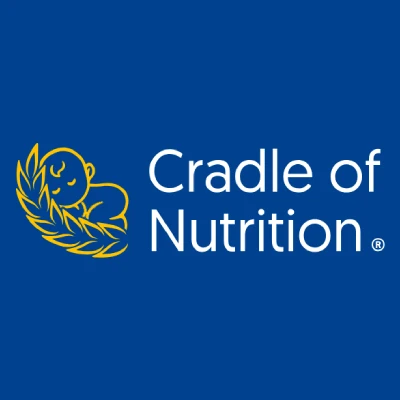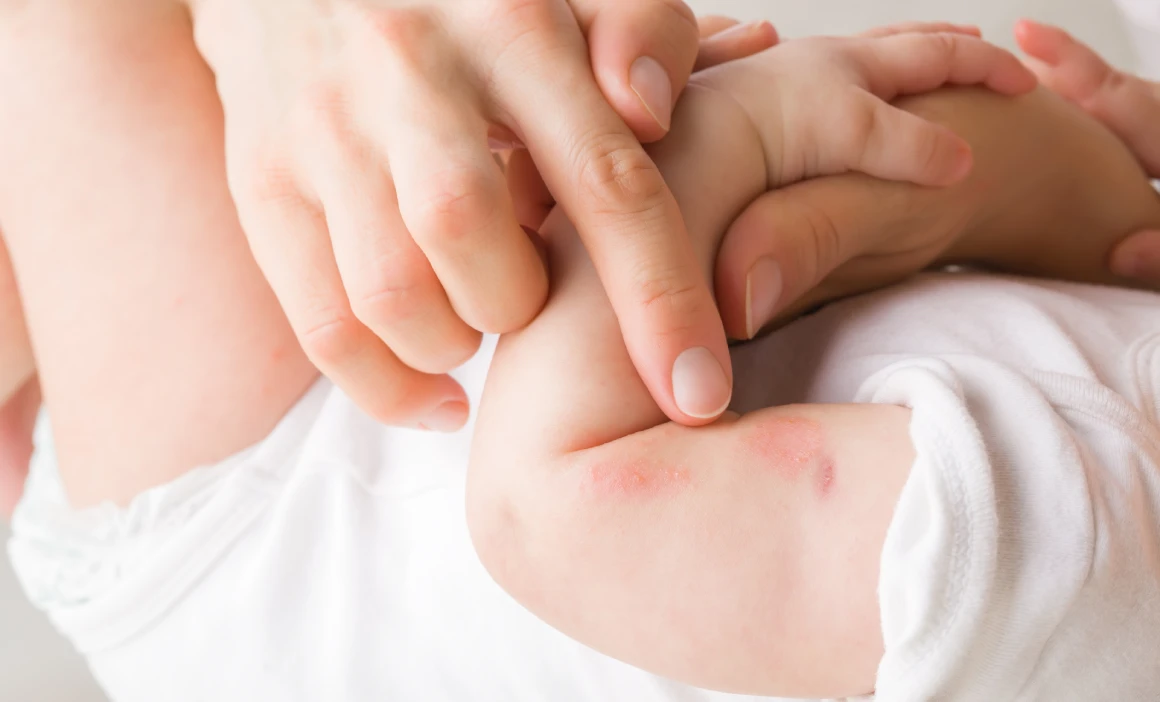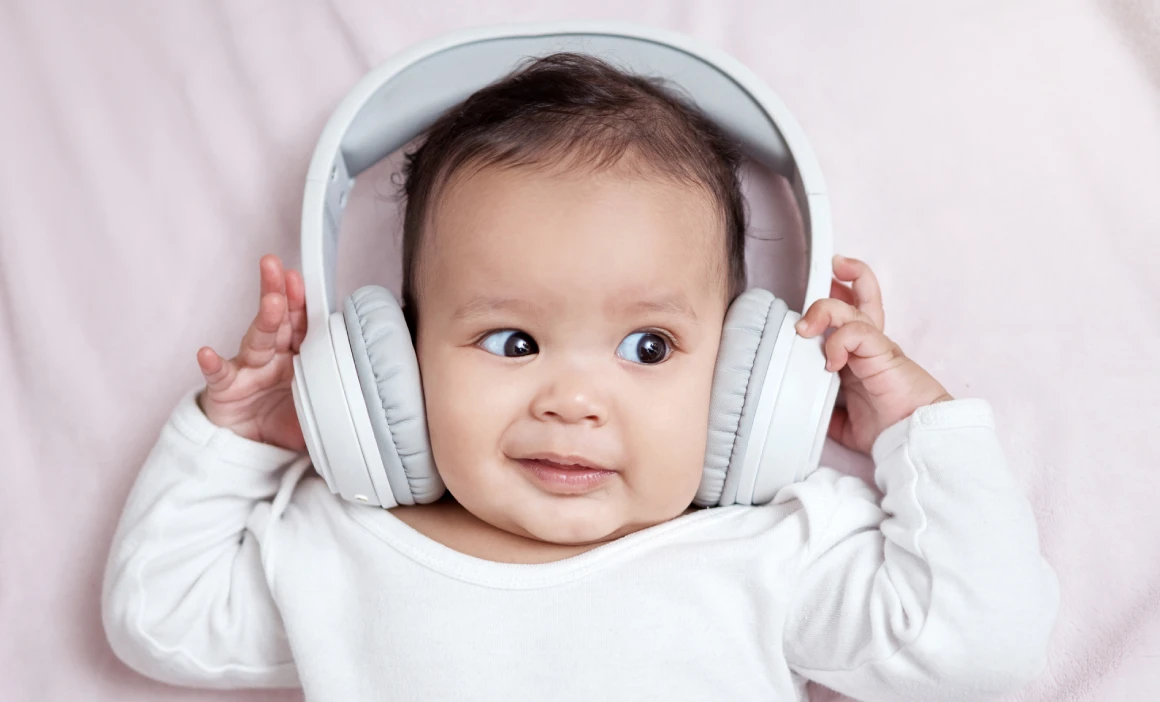
Speech and Hearing Development in Babies and Toddlers: From First Sounds to First Sentences

Cradle of Nutrition
- 3 minutes read
Understanding how babies learn to hear, speak, and communicate is vital for parents, caregivers, and professionals. This guide walks you through every stage of hearing and speech development—from a baby’s first coo to a preschooler’s full sentence—plus the critical role that music plays in this process.
Whether you’re a parent, or early childhood educator, these evidence-based milestones and tips will help you support each child’s unique communication journey.
Birth to 3 Months: Foundation of Hearing and Voice Recognition
Developmental Milestones
- Reacts to loud noises by startling or calming
- Begins cooing by 6–8 weeks
- Recognizes caregiver voices and calms when spoken to
- Differentiates cries for needs (hunger, discomfort)
Examples:
- A 2-week-old calms when hearing a parent’s voice
- A 3-month-old coos back during diaper changes
- Infant turns head toward familiar songs
4 to 12 Months: Babbling, Name Recognition, and Enjoying Music
Developmental Milestones
- Babbles with consonants (e.g., “ba-ba,” “da-da”)
- Turns head toward sound sources
- Recognizes own name by 6–9 months
- Understands basic words like “no” and “bye-bye”
- Shows pleasure in music and interactive songs
Examples:
- 6-month-old claps to “If You’re Happy and You Know It”
- 9-month-old looks up when name is called
- Baby anticipates hand gestures in songs like “Itsy Bitsy Spider”
1 to 2 Years: First Words and Growing Vocabulary
Developmental Milestones
- Says first real words around 12 months
- Understands and follows simple commands (“give me ball”)
- Points to body parts or objects when named
- Combines two words by 18–24 months
Examples:
- 12-month-old says “mama” and “milk” intentionally
- 18-month-old says “want juice” and gestures to cup
- Bounces or sings along to familiar lullabies
2 to 5 Years: Sentences, Questions, and Storytelling
Ages 2–3 Years
- Speaks in 2–3 word phrases
- Follows two-step directions
- Sings parts of familiar songs
- Vocabulary expands rapidly
Examples:
- 2.5-year-old finishes lines in “Wheels on the Bus”
- Says “me go park” or “want banana please”
Ages 3–4 Years
- Uses 4–6 word sentences
- Tells short stories
- Speech is mostly intelligible to strangers
- Engages in “why” questions
Examples:
- Child tells about their day: “I go grandma house. We bake cookies.”
- Sings a full verse of a nursery rhyme on pitch
Ages 4–5 Years
- Masters basic grammar and sentence structure
- Understands time concepts and storytelling
- Sings structured songs and explores melody/rhythm
Examples:
- Makes up silly songs with invented lyrics
- Follows a musical game with stop-and-go cues
How Music Enhances Hearing and Speech Development
Music is not just fun—it’s a powerful developmental tool.
Learn more about the science behind this in How Music Builds the Brain
Benefits of Music for Speech and Language:
- Improves auditory discrimination for sounds like “b” vs. “p”
- Enhances memory and word recall through melodies
- Supports rhythm and timing, essential for speech patterns
- Builds vocabulary via repetition and rhyme
- Encourages emotional expression and social interaction
Real-Life Examples:
- A toddler hums a melody while playing with blocks
- A 4-year-old improvises a song to explain a story or feeling
- A baby calms immediately when a familiar lullaby starts
Red Flags in Speech and Hearing Development
When to Consult a Specialist:
- No babbling by 6–9 months
- Doesn’t recognize name by 12 months
- No words by 16–18 months
- Doesn’t follow directions by 2 years
- Speech is difficult to understand after age 3
- Limited social interaction or interest in sound
Early evaluation by a speech-language pathologist or audiologist is highly recommended if concerns arise.
How to Support Speech and Hearing at Home
- Talk constantly about what you’re doing and seeing
- Sing daily, especially interactive songs with motions
- Read aloud starting in infancy
- Use music during daily routines like bath time or bedtime
- Limit screen time, which can reduce live interaction
- Listen and respond to your child’s attempts to communicate
Final Thoughts: Support, Sing, Speak, Repeat
Every coo, babble, and song helps shape a child’s brain. With consistent interaction, rich language exposure, and the joyful integration of music, caregivers and professionals can build strong communication foundations.
Whether your child is humming a tune or asking “why?” for the tenth time—each moment is a milestone.
By Erika Barabás
Helpful Sources:
- ASHA (Speech-Language Experts): asha.org
- CDC Developmental Tracker App
- zerotothree.org
- musictherapy.org






